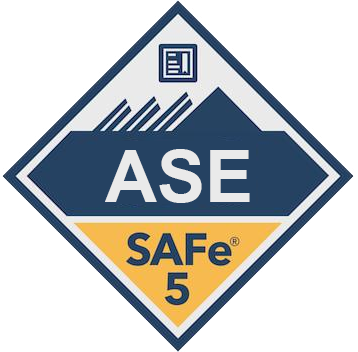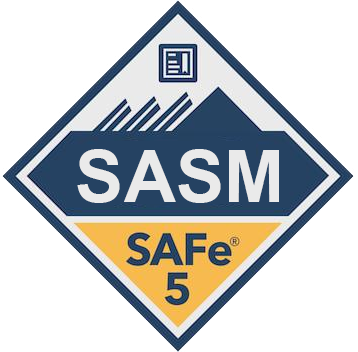When product you are introduced to Agile and its various aspects, along with details, information, and layers, you hear several terms and their abbreviations. Often people memorize phrases and abbreviations without realizing the meaning. Due to that, they face various confusions, which end up impacting their performance.
If you do not wish for something similar, it is time to delve deeper and better understand the terms, what they mean, and why there is confusion.
Dealing with the confusion with terms:
In this blog, we will focus on four terms that have become popular currently and people are using them often. The problem is people are using these terms without often realizing that they are being used either without context or in a manner that does not fit the context. Hence, it is necessary to clearly understand the terms, what they mean, and where they fit. This way, you won’t be making the same mistakes.
We will now be delving deeper into the topic; before that, we will focus on the terms and their full forms once. They are:
- MVP or minimum viable product
- MMF or minimum marketable feature
- MMR or minimum marketable release
- MBI or minimum business increment
Usually, people, while using these terms, often say one but mean the other. If you wish to avoid repeating such mistakes, it is time to focus on the terms, understand their meaning, and implement them correctly.
Focusing on the definition of the terms:
MVP or minimum viable product –
The term was coined by Frank Robinson at SyncDev in 2001 and then popularized by Eric Ries in Lean Startup, a book he wrote in 2011. According to the definition, MVP is an investment in learning. It is an experiment where the goal is to explore the requirements of the potential customer.
For the purpose of this experiment, you will create a version of the possible product with the least effort possible so that it can be used for validating learning about the potential customers. These experiments are more similar to a hypothesis regarding the customer’s wants and do not require the real versions of the end products. Hence, these products don’t follow the same level of quality or scale which will be there in the actual end product.
This does not mean that MVPs cannot evolve in a real product or, to be accurate, a real MBI, but usually, they evolve into prototypes. Such a development is also pretty helpful because MVP, being an investment in learning, isn’t meant to become the real thing.
In an MVP, a team usually runs the experiment with a subset of the potential customers to test a new idea, collect relevant and related data, and discover whether the customers are interested or not.
To put everything in simpler points:
- MVP is an investment in creating a new product or service
- It is created to explore a hypothesis
- It often begins the journey as a functional prototype where certain functionalities are simulated or performed manually
- It aims to do just the amount of work that will result in the product appearing in front of the customers to find out exactly what they need.
MMF or minimum marketable feature –
The term was first proposed by Denne and Cleland-Huang, and it denotes the smallest piece of functionality which can be delivered, has value to its customers, and subsequently to the organization. An MMF is also part of an MMR.
MMR or minimum marketable release –
Every successful product gets deployed incrementally to the marketplace over a period, and each major deployment is referred to as a release. An MMR is the release of a product that has the smallest possible feature set that addresses the current new needs of the customers.
MMRs help reduce the time-to-market between releases while reducing the coherent feature set of each release to the smallest increment that offers new value to the customers. Ideally, an MMR is one MBI, but it can also be multiple.
To put things in point:
- MMR is a collection of one or multiple MBIs
- It is also part of an MMR
MBI or minimum business increment –
The term was coined by Al Shalloway, and it denotes the smallest piece of value that can be realized by a customer, which is consistent with the strategy of your organization. An MBI adds value for the customers, resulting in valuable feedback to the product team regarding the fact that the proper functionality is being built and in the right way.
An MBI is the solution that contains the pieces required for value realization by the customers, and when done correctly, it is both MMF and MMR.
To simplify and jot down the points:
- MBI is the smallest releasable chunk of value which makes sense from a business perspective
- It is focused on the highest value and quick realization of said value
- It is targeted at a particular segment of the market
- This is also the only artifact where cost-of-delay makes sense
What are the reasons behind such confusion?
Now the question comes, why do people often get confused about these concepts? The answer is simple, and the following points to elucidate that feature sufficiently:
- The concepts are closely related, sometimes interrelated, and have pretty similar names. If you are unclear about the concepts, getting confused amongst these terms is quite possible and natural.
- Over the years, various authors have used these terms in different ways, fitting their explanations, narrative, and ideas. Hence, a clear distinction is missing, which means additional confusion, especially when pursuing multiple authors to understand the concept and get a better grip.
- It is also natural that various terms will evolve and get intertwined due to usage, which will cause further confusion.
The difference between the terms MMR, MMF, MVP and MBI
Now, let’s focus on the difference. It will help with the understanding of the concepts more. First, we will look into the difference between MMR, MMF, MVP and MBI. As we have explained earlier, ideally, an MMR is a single MBI. Your team needs to do just enough work to develop the minimum functionality which provides the customers with value and release it as quickly as possible – it is an MBI.
Practicality dictates that you must sometimes release more than a single MBI. For example, you can decide on a regular quarterly release. Your customer may prefer large releases; it is becoming less common, with the customers and their preferences regarding incremental releases evolving. These challenges can be addressed in time, but it’s possible that you are not there yet.
MVP (Minimum Viable Product), MMF (Minimum Marketable Feature), MMR (Minimum Marketable Release), and MBI (Minimum Business Increment). These are all concepts related to product development and project management. Here’s a comparison table that highlights their differences:
| Criteria | MVP | MMF | MMR | MBI |
| Definition | A basic version of a product that contains only the essential features to validate its viability and gather user feedback. | A single, stand-alone feature that is valuable and marketable to customers, usually developed as part of a larger product. | A collection of MMFs that together form a marketable version of a product. | The smallest increment of value that can be delivered to a business, often spanning across multiple teams or projects. |
| Goal | Validate assumptions, test hypotheses, and learn from user feedback. | Deliver a single, valuable feature that can be marketed to customers. | Create a marketable product version with a set of valuable features. | Deliver value to the business through coordinated efforts across multiple teams or projects. |
| Focus | Core functionality and user feedback. | Value and marketability of a single feature. | Value and marketability of a set of features. | Business value and cross-team coordination. |
| Development Time | Shorter, quick iterations. | Relatively short, depending on the complexity of the feature. | Longer than MVP and MMF, as it involves the integration of multiple features. | Varies, depending on the scope and the number of teams/projects involved. |
| Use Case | Early-stage startups, new products, or exploring new markets. | Adding new, valuable features to an existing product. | Releasing a new, marketable version of an existing product. | Coordinating efforts and delivering value across multiple teams/projects within a business. |
Additional information and a sneak peek of the reality
When you have streamlined the way of working, there should be a point where an MBI is an MMF, which you will release to the customers, so it becomes an MMR as well. In your journey, you will discover that MMF and MMR are the stepping stones that will take you toward your aim, which is MBI.
You may not be there yet or are probably working with people familiar with older terminologies like MMF and MMR. In such a situation, you must acknowledge that older terms exist, but you must avoid them whenever possible.
Please note that these concepts can sometimes overlap, and their implementation may vary depending on the organization and specific project.
Example on Concept,
| MVP | MMF | MMR | MBI | |
| Real-life Example | An early version of Dropbox that allowed users to sync files between devices but had limited sharing features. | Instagram’s “Stories” feature, which allowed users to share ephemeral content separate from their main feed. | The first iPhone, which combined phone functionality, an iPod, and an Internet browser into one device. | A software company delivering a set of coordinated features that improve the user experience across multiple products in their portfolio. |
Example for the same product: Let’s use a hypothetical ride-hailing app as an example for each concept:
| MVP | MMF | MMR | MBI | |
| Real-life Example | A simple ride-hailing app that allows users to request rides and drivers to accept them, with basic functionality for payments and GPS navigation. | Adding a “carpool” feature that allows users to share rides with other passengers traveling in the same direction, reducing costs for users and increasing efficiency. | The app has evolved to include carpooling, food delivery services, and integration with public transportation options, offering a comprehensive solution for urban mobility. | The ride-hailing company collaborates with an e-scooter rental service, integrating both services into their respective apps to provide a seamless multi-modal transportation experience for users. |
Why are we bringing these terms under one umbrella?
While MVP, MMF, MMR, and MBI have distinct characteristics and goals, they share some similarities. Moreover, they are also closely related to each other, hence, they belong under one umbrella. The following points will help elucidate the matter further.
Focus on value:
All these concepts are centered around delivering value to customers, users, or the business. They aim to create products or features that provide benefits or solve problems for their target audience.
Iterative development:
Each concept involves an iterative approach to development. As the product or feature progresses through different stages, it is continuously refined based on feedback and learning for optimizing its value and functionality.
Risk mitigation:
By focusing on smaller increments of value, these concepts help manage risk during product development. They allow teams to test assumption, learn from user feedback, and make necessary adjustments before committing significant resources to a project.
Adaptability:
All four concepts encourage adaptability in product development. They allow teams to pivot and make changes as they gather insights from users, the market, or other internal and external factors.
Customer-centricity:
MVP, MMF, MMR, and MBI all emphasize the importance of understanding the needs and preferences of customers or users. This customer-centric approach helps ensure that the product or feature aligns with the target audience’s expectations and desires.
Goal-oriented:
Each concept is driven by specific goals, such as validating assumptions (MVP), delivering a marketable feature (MMF), creating a marketable product version (MMR), or delivering value across multiple teams/projects (MBI). These goals help teams stay focused and aligned throughout the development process.
Apart from these similarities, it is essential to recognize the unique characteristics and goals of each concept and apply them appropriately in different situations.
To Conclude:
This is just the beginning, as we must explore several other terms and their details. We would be creating a series of blogs focusing on the differences between different terms used in an Agile environment. This is the first one of the series. Please keep your eye on our blog page to continue receiving updates on these particular topics, focusing on solving the confusion associated with different terms, their implication, and correct usage.
For more posts like this follow Agile Digest social Pages or subscribe to our newsletter:
Wesbite: https://agiledigest.com/
Facebook: https://www.facebook.com/agiledigest/
LinkedIn : https://www.linkedin.com/company/agiledigest/
Youtube: https://www.youtube.com/@AgileDigest








































































